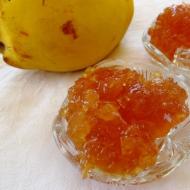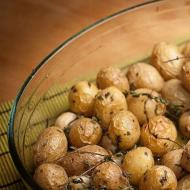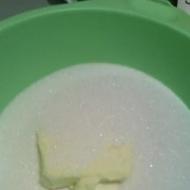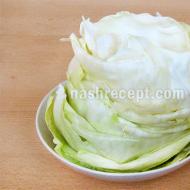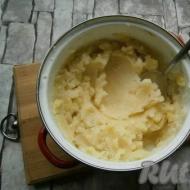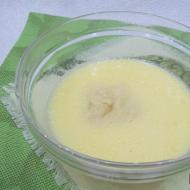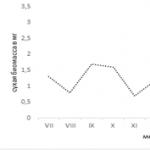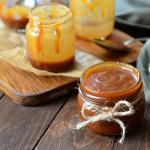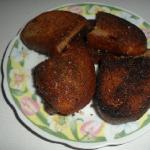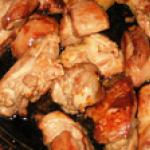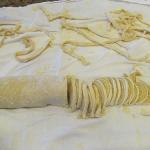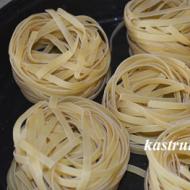
Which yeast is better: wine or spirit yeast? Selecting yeast for high-quality mash. Pressed baker's yeast
One of the most important tasks that faces a person learning the basics of moonshine brewing is the correct selection and use of yeast raw materials. The choice determines how quickly fermentation will take place, the organoleptic qualities of the final product and the ease of working with them.
The properties of yeast cultures have been known to mankind since ancient times. Using them, people prepare wine, beer, bake bread and distill moonshine. By researching and improving, new strains are obtained that help achieve certain goals. Yeast, as one of the main ingredients for making mash, is a direct participant in the fermentation process. To obtain the best raw materials for the production of moonshine, you need to know the components and be able to choose them correctly. The products that are available to the buyer differ in the level of resistance to external factors, the specific habitat, and the potential for reproduction at a certain temperature.
There are several main types for moonshine:
- bakery pressed and dry;
- alcohol;
- turbo yeast;
- wine;
- pubs
What yeast is best to use for mash?
Pressed baker's yeast

Grayish briquettes that are often found on sale are traditional raw materials for fermentation. To obtain the best result, you should carry out -inverting the sugar for the mash-, and upon completion of fermentation, do -clarification of the mash with bentonite-. Despite the presence of a large number of more advanced product options, many moonshiners prefer pressed ones due to the following qualities:
- You can purchase a pressed product at almost any retail outlet;
- low selling price compared to other types;
- there is no need for activation, they are added directly to the wort;
- due to the fact that the fungi arrive in the active phase, the reaction when they are added occurs very quickly;
- after distillation, the drink retains the authentic smell and taste characteristic of country moonshine.
Pressed products have a number of disadvantages that cannot be ignored:
- After the distillation process is completed, the strength of the wort does not exceed 9-11 degrees, which means the amount of moonshine will be small.
- Pressed raw materials are stored for only a day at room temperature and up to two weeks in the refrigerator. Therefore, before you make a purchase, check the manufacturing date.
- They are demanding on storage conditions. They can deteriorate during storage and transportation if the correct temperature conditions are not maintained.
- If you are going to make sugar mash, there is a need for feeding.
- The specific smell that appears during fermentation is retained in the final product. However, some traditionalists like it.
- Fungi of this species are characterized by abundant foaming, as they produce a lot of carbon dioxide. This leads to the fact that 1/3 of the container volume has to be left empty.
Dry baker's yeast

The product is sold in convenient bags in confectionery departments or on shelves with seasonings. Due to their ease of use, dry products have occupied a large part of the market, displacing pressed products. Which dry yeast is best for moonshine? It is best to purchase the Pakmaya Cristal and Saf-Levure brands; they are an intermediate option between alcohol and baking types.
Among the advantages of dry products, the following should be highlighted:
- You can buy them at any grocery store.
- The price is relatively low, but it all depends on the manufacturer of the product.
- They have a long shelf life and are unpretentious to conditions.
- When using them, your hands do not get dirty.
- The bags are sold in different sizes, which simplifies the selection of packaging for the required volume of wort.
Despite a number of positive qualities, they also have negative sides:
- There is a need for feeding, since, in addition to carbohydrates, they require additional substances. This plays a role when you are choosing which yeast to use for your sugar mash. In this case, fruit and starch-containing raw materials are preferable.
- They require activation, for which they are poured with warm sweetened water until foam appears, which indicates the beginning of fermentation.
- Like pressed raw materials, it has a specific aroma, although less pronounced. This point can be omitted if you use distillation columns for distillation.
- Fermentation of the wort takes longer, since sugar processing is quite slow. In turn, this increases the amount of fusel oils in the wort, so during distillation it is necessary to “cut off the tails” earlier. At the same time, the amount of drink produced is much smaller.
- Yeast usually freezes when the liquid reaches 14 degrees of strength, which means the amount of moonshine will be average.
- A large amount of carbon dioxide, which is released as a result of their activity, forms abundant foam on the surface of the wort.
If you're wondering, what kind of yeast is better to choose for mash, dry or pressed , then you should proceed from the amount of experience and knowledge. If you are making your first mash and are new to this business, then choose dry ones. They are available, and the results are more stable.
Alcoholic yeast for moonshine

These strains of fungi are created specifically for the production of alcohol. If you are not sure which yeast is best to use for moonshine mash, then you should focus on alcohol, as they have a number of serious advantages.
- This type is resistant to ethanol and continues fermentation until the strength of the wort reaches 18 degrees. Thanks to this, the yield of moonshine is quite large.
- Fermentation occurs quite quickly. If the temperature is maintained, the sugar mash will ripen in 3-4 days.
- Raw alcohol does not form foam. —The mash container can be filled to 90%.
- A significant advantage is ease of storage and long shelf life, so you can buy them in reserve.
- There is no foreign yeast smell. This is especially good for fruit and grain moonshine.
- Due to the fact that the product is sold in different volumes, it is easy to select the required dosage.
- The amount of various impurities is kept to a minimum, which has a good effect on the taste, smell and quantity of the resulting drink.
This raw material also has its disadvantages:
- You can only buy them in special stores, which are not very common.
- Their price is higher than bakery ones.
- Some brands of raw materials have quality claims. Complaints are often related to the fact that when using them, the mash does not ferment.
Turbo yeast

This variety belongs to alcoholic strains, but with significantly improved characteristics.
Considered best to use for the following reasons:
- the strain has the highest resistance to ethanol. Their use makes it possible to obtain wort with a strength of up to 20 degrees;
- fermentation occurs much faster than in all other species. You can start distilling within a day or two, provided that the optimal fermentation regime is observed;
- the raw material does not require additional feeding, since everything that is required is already in the composition;
- foam formation is insignificant;
- They tolerate different temperatures well. Some brands are adapted to low temperatures, and some to higher ones;
- the amount of harmful impurities is small, which is natural for such a short fermentation period;
- do not affect the taste of the finished drink.
They are a great choice if you don't mind the following:
- high cost;
- sale only in special places;
- too intense fermentation.
Wine yeast

They are also used for making moonshine due to a number of positive qualities:
- They are resistant to ethanol, which makes it possible to obtain a wort with a strength of about 17 degrees.
- There is no yeasty smell in the final product.
- They can be stored for a long time and are unpretentious to temperature.
- Low consumption of raw materials - for 10 liters of mash you only need 2-4 g.
- It doesn’t matter what kind – fruit or grape, grain or sugar – the mash comes out of excellent quality.
The disadvantages of these strains are:
- high price;
- they are quite difficult to buy, as they are sold in special stores;
- The fermentation process is slow, the wort sits longer.
 The use of this raw material for moonshine mash is not recommended. It gives a very low strength of the product and is characterized by very strong foaming.
The use of this raw material for moonshine mash is not recommended. It gives a very low strength of the product and is characterized by very strong foaming.
Yeast rating for moonshine

The variety of types, types of packaging, the presence or absence of additives guarantees that you will choose the right product. But you can find out which yeast is right for you personally only by experimenting.
Which type do you prefer to use? Be sure to share this in the comments.
Yeast in moonshine brewing is the most important ingredient, on which not only the time and intensity of wort fermentation, but also the taste of the finished product depends. Today, thanks to an increase in interest in household distillation and a large assortment of moonshine stills, a special variety of yeast - alcohol or wine - has appeared on the shelves. This is a special strain that provides many advantages over baking strains. Our article will tell you which yeast to choose for moonshine and how to prepare it yourself using baker’s yeast.
Varieties of Yeast Strains
Yeast is a colony of single-celled microorganisms (fungi) that uses organic compounds to produce energy. A special strain of yeast - alcoholic - is facultative, that is, it does not require oxygen dissolved in the medium for development and respiration, but vital activity is accompanied by the release of alcohols. Due to the high concentration of glucose, rapid growth of yeast cells occurs (Pasteur effect) and its subsequent fermentation (Crabtree effect).

For moonshine brewing, you need a strain that produces a large amount of secondary metabolism products:
- fusel oils;
- ethers;
- acetoin;
- ethereal and acetaldehyde,
- isoamyl alcohol, etc.
These are the same harmful impurities in moonshine, without which a real high-quality product cannot be obtained. The combination of ethyl and other alcohols with esters and fusel oils provides unique organoleptic properties of the alcoholic drink.
The following types are distinguished:
- Bakery
Used in the food industry and cooking for pastries and baked goods.

For home brewing, the baking variety is the worst option, in which part of the crop in the mash dies within the first 5 days.
- Wine
A unique strain used only in the preparation of elite wines. It is practically not used in domestic distilling due to the high price and extremely limited range on Russian shelves.
- Beer houses
Used in the food and culinary industries. They are a rich source of minerals and vitamins. Used in industrial and domestic brewing. The mash for moonshine made from such yeast will not be of sufficient quality.
- Alcohol
Designed specifically for alcohol (with their help, medical alcohol is also obtained). A special strain whose vital activity is accompanied by the most complete set of metabolic products.
VIDEO: Moonshine brewing for beginners - how to choose yeast
Price of moonshine yeast
Today, yeast for home brewing can be purchased in specialized or online stores. The cost depends on the brand and fermentation speed, on average 100 g. will cost 130-400 rubles.
- Bragman Turbo - 100 gr. designed for 8 kg of sugar and ferments within 3 days to 18%. Cost 380 rub.;
- Intoxicants - 1 pack dissolves in 22 liters of water and 6 kg of sugar. Price - 130 rubles;
- Extra (Lviv) - 180 rub. per 100 grams;
- Ukrainian (Krivoy Rog) dry yeast for moonshine - 150 rubles. per pack 100 gr. for a standard recipe.
- Finnish - from 280 rub. on same conditions.
Some experts advise buying alcoholic yeast for moonshine for future use, especially in Belarus, where there are interruptions in the supply of such goods. Fortunately, we don’t have such problems, the assortment is more than extensive, so there is no point in a strategic reserve.
The expiration date is very critical - even a few days expired product will no longer give the expected result. The fermentation process will start, but will not proceed as actively as it should.
What is the difference between alcohol strains and all other strains?
It is clear that alcohol ones are intended for alcohol, in our case moonshine. But how exactly do they differ from the more familiar bakery ones?
- The fermentation period is 2-3 times shorter. If you have to spend about 12 days on regular ones, then alcohol fermentations take up to 6 days.
- Facultative anaerobes live in conditions of high alcohol concentration - more than 18%, while bakers in such an environment lose most of the crop. Taking this into account, the yield of moonshine is much greater.
- Almost no foam. On the one hand, this is an indicator of quality - the less foam, the more active the metabolism; on the other hand, no defoamer is needed.
- The organoleptic properties are better - even at the stage of preparing the mash, the aroma of bread is felt, there are no unpleasant odors and they are more fermenting than any other analogue.
The use of any type of yeast requires the user to comply with certain conditions - the creation of a nutrient medium and temperature conditions. Alcohol yeast in this regard is not much different from its analogues. Still, here are some recommendations regarding their use.
- The fermentation temperature should not fall below 22°C and rise above 28°C. In winter, a container with mash is usually placed near the battery, but in summer the task becomes more complicated. We advise you to buy an inexpensive aquarium heater and use it to constantly maintain the desired temperature.
- The bottle should not be exposed to direct sunlight, otherwise the mash will not ferment. But it will simply turn sour with all the ensuing consequences.
- You cannot close the lid hermetically - there must be an outlet for carbon dioxide. Provide a water seal or do it the old fashioned way - cover it with a glove with several small holes punched in it.
- Never use boiled water for mash - it does not contain dissolved air, which is necessary for all strains, including facultative ones. Artesian or spring water is best suited. Acceptable - purified or settled water supply.

The requirement of alcohol yeast for high-quality water is very high. Even small amounts of impurities can disrupt your metabolism.
- The mash is carefully mixed daily so that the largest possible amount of organic matter is involved in the fermentation process.
- To prepare, first make a starter - dissolve the powder or break it into small pieces pressed in a small amount of warm (22-24°C) water with added sugar. After fermentation begins, the starter is mixed with the rest of the heated water and sugar.
How to prepare yeast for moonshine
There are different situations and at a certain point in time the required ingredient may not be at hand. This is not a reason to use baker’s yeast for moonshine or even to postpone making moonshine until later. We suggest you make them yourself.

Rye
Ingredients:
- hops - 400 gr.;
- water - 6 liters;
- rye malt - 4 tbsp.;
- premium wheat flour - 4 tbsp;
- baker's yeast - 1 tbsp.
How to cook:
- Pour hops into cold water, bring to a boil and boil for 3-3.5 hours under a closed lid, stirring occasionally so that the hops do not burn.
- Cool in a bowl of cold water to 35°C and add flour, malt and yeast. Stir with a wooden stick until completely dissolved, cover with a lid and wrap in a blanket or cover with pillows on all sides. It is necessary to maintain the temperature during the day. After this, the mass is put into 200 ml jars for later use.
Do not use a mixer for mixing.

Fresh ingredients are used for cooking. Pharmacy drugs are good, but only a live product will give the expected result
On beer
Ingredients:
- dark beer - 250 ml;
- sugar - 1 tbsp;
- wheat flour - 1 tbsp.;
- water 26°C - 1 tbsp.
How to cook:
- Stir flour in water and leave in a warm place for 5-6 hours.
- Add sugar and beer and return to heat for 12 hours. Can be used immediately after preparation.
On rye bread
Ingredients:
- rye bread - 0.5 kg;
- water 26°C - 2 tbsp.;
- raisins - 100 gr.;
- granulated sugar - 3 tbsp;
- flour.
How to cook:
- Break the bread into small pieces and add water.
- Stir until smooth, add raisins and sugar. Wrap up and send for a day in a warm, dark place.
- After this time, the mass is filtered through cheesecloth, and the remaining bread is squeezed out well. This is the basis for the dough.
- Mix flour into the liquid to make it like pancake batter. After an hour you can already use it for mash.
As you can see, there is nothing difficult about making moonshine yeast yourself. Of course, in the first stages, we advise you to buy alcoholic yeast for moonshine in order to be sure of the result. Well, in the future, nothing prevents you from experimenting with new tastes.
VIDEO: Yeast test for moonshine
As you comprehend the science of moonshine brewing, sooner or later you begin to decide which yeast is best to use for your mash. This is a fundamental question for the distillery because yeast is the basis of the entire process. The main raw material for the production of homemade alcohol is mash or wort. The latter is a product of yeast metabolism. It is thanks to the processes that occur under the influence of these microscopic fungi that alcohol is formed in the mash as a product of their vital activity. These microscopic living organisms feed on sugar, breaking it down into alcohol and carbon dioxide. And like all living organisms, they live in certain conditions, so you definitely need to know how to properly set up the mash, how to choose yeast for moonshine, how much of it is needed and what proportions are best to obtain a quality product.
What types of yeast are there? The options are as follows:
- Alcohol. The best option for making sugar-based wort. Yeast requires heat to function normally. But as the concentration of alcohol in the mash increases, they begin to die. The maximum percentage of alcohol concentration that wort can achieve with regular sourdough is 12%. Special yeast for mash (they are called alcohol-resistant) can increase its concentration in mash to 17%. Another advantage is that the wort has a very fast fermentation period: 3–6 days instead of the usual 7–12. Due to this, significantly fewer various harmful impurities are formed in the mash, which have to be gotten rid of during distillation. The final product will be cleaner and in greater quantity. This is a special yeast for moonshine. Their disadvantages are the price and the need to purchase them only in specialized stores.
- Bakery raw pressed. The most common and most unfortunate option. Can be purchased at any grocery store, the price is low. The unused remainder should be stored in the freezer, then they retain almost all their qualities for up to 6 months. But when adding frozen yeast to the wort, you should remember that after freezing they lose some of their properties, so you need a little more of them and they will require additional feeding. This means they need to be diluted in warm water and a little flour and sugar added. 10-15 minutes after the start of the reaction, you can add it to the mash. The downside of this starter is its short shelf life, so it’s better to buy exactly as much as you need. And check the release date when purchasing. Expired yeast cannot be used: the reaction will not complete and the mash will be unusable.
- Dry bakery products. The advantage over raw ones is the absence of harmful impurities and a long shelf life. Manufacturers of raw yeast use it primarily for bakeries, so they do not particularly monitor the chemical and biological purity of the product. There are many yeast fungi, and not all of them produce alcohol in the process of life; there are also those that cause fusel oils, acetone, methyl alcohol and other unnecessary impurities to appear in the mash, which have to be gotten rid of during the distillation process. In dry yeast the amount of these impurities is less than in raw yeast, but for making homemade alcohol it is better to use special alcoholic ones.
- Wine. Used to prepare wort based on fruits and berries. Due to the high price, they are practically not used in the production of sugar moonshine, since they are mainly fed with fruit sugar - on a regular one, the fermentation process is slow and, as a rule, the wort is not fermented to the end, so the product yield is low. But for making fruit mash, this yeast is the best option. With fructose they produce the best quality and quantity of wine alcohol.
- Wild. This is the most natural type of yeast, it is found on the surface of berries, such as grapes or currants. Thanks to them, mash can be made without additional addition of factory starter. But in practice, this recipe only works with large quantities of berry raw materials; in most cases, wine yeast is needed to prepare fruit and berry moonshine.
Is it possible to mix different types of yeast? There is an opinion that this gives good results. Theoretically, this is possible, but in practice, it is possible to say for sure whether this can be done and what proportions will be optimal for different types of fungi only by trial and error. Whether this will give a good result or end in wasted time and food for mash is up to you to decide.
Wort production technology
Proportions
How much yeast and other ingredients do you need? The standard proportions for sugar mash are as follows:
- Sugar - 1 kg. There is no difference between cane and beet sugar for the production of moonshine. It is better to take it purified so that there are no foreign impurities.
- Water - 4 liters and 0.5 liters additionally if you use inverted sugar syrup to prepare the mash. The water should be soft, clean, potable, preferably settled spring or well water. Can I use purchased purified drinking water? Yes. It's simply filtered, it has all the microorganisms that yeast needs, and it's soft. But under no circumstances use boiled or distilled water.
- Yeast - 20 g dry or 100 g pressed.
Standard proportions may vary depending on the type of yeast you use. Always read the instructions on the packaging. The amount of yeast for mash may vary depending on the type you purchased. There are different types of instant yeast, the technology of which differs from the standard one. The preparation procedure for adding yeast to the wort may also differ depending on its type.
Requirements for equipment and utensils
Before we talk about the mash preparation process itself, it is necessary to say a few words about your equipment. All utensils used for making homemade alcohol must be clean. Any foreign impurities will negatively affect the quality of the final product, since distillation is an active chemical process. For the same reason, plastic should not be used as fermentation vessels, or for storing the finished product. Both mash and moonshine actively dissolve plastic and all its harmful ingredients will end up in the drink. Therefore, only stainless steel, glass and silicone are needed.

Making mash
For mash, invert sugar syrup is first prepared.
- For 1 kg of sugar, take 0.5 liters of water, heat the latter to 70 °C, add sugar, and bring the solution to a boil.
- Then add citric acid at the rate of 25 g per 6 kg of sugar.
- The resulting syrup is simmered over low heat for 1 hour.
- The syrup used is poured into a fermentation container, water is added, the temperature should be 27 °C.
- Before pitching, the yeast should be diluted in a small amount of water and placed in a warm place.
- The optimal temperature is 20–25 °C.
When a stable foam cap appears above them, the yeast is ready for pitching. When using baker's yeast in mash, strong foaming is possible. To extinguish it, you can add regular store-bought cookies to the liquid. After adding yeast, the mash must be placed under a water seal and the temperature regime must be maintained at 25–30 °C. It is necessary to avoid sudden changes in temperature, as this may stop the fermentation process. You won’t be able to start it over again; you can throw away the mash.
Even adding new yeast solution will not correct the situation.
Depending on the yeast used, the fermentation process can last from 3 to 12 days. When carbon dioxide stops being released, the mash will lighten, an alcoholic smell will appear, and it will taste sour and bitter. You can begin the process of distilling it into alcohol.
It's no secret that the quality of moonshine largely depends on yeast. Previously, only dry or pressed baker's yeast was sold, which was used by everyone. Nowadays, the range has expanded significantly; it has become possible to choose yeast for moonshine, for example, take alcoholic ones. Special strains have several advantages.
All yeast can be divided into the following types:
- bakery– used by the food industry when baking bakery products; for moonshine brewing this is the worst option, significantly reducing the quality of the mash;
- wine– a special type of yeast for winemakers; due to its chemical properties and high cost, it is practically not used in moonshine brewing, only for making fruit mash;
- pubs– this strain was first isolated by Carlsberg specialists in 1881. Before this, brewing used random strains of yeast that got into the wort from the air, and beer looked more like a mash with hops, rather than a modern foamy drink; brewer's yeast is also sold as vitamin supplements, but they are not suitable for moonshine;
- alcohol– in industry they are used to produce alcohol; it is on the basis of alcoholic yeast that it is best to make mash for moonshine from sugar and grain.
Benefits of alcohol yeast:
1. Shorter fermentation time. The mash is ready for distillation in 3-6 days (instead of 7-12).
2. Increased vitality. Alcohol yeast die when the alcohol concentration in the mash is 17-18%. This figure is significantly higher than that of other types of yeast, therefore, the yield of moonshine, all other things being equal, will be greater.
3. Minimum concentration of harmful impurities. Due to prolonged fermentation of baker's yeast, harmful substances accumulate in the mash: acetone, fusel oils, aldehydes. Subsequently, additional purification of moonshine using coal or other methods is required. When using alcoholic yeast, this problem is not so acute.
4. No foam. Special yeast for moonshine does not emit a lot of foam, so making mash does not require a defoamer.
1. Maintain fermentation temperature at 22-28°C. To do this, the mash can be heated with a regular aquarium heater. The container should be kept in a dark room, protected from sunlight.
2. Seal the bottle with a water seal or a glove with a hole in one of the fingers so that there is an outlet for carbon dioxide.
3. Do not use chlorinated, tap or boiled water. For moonshine you need spring or bottled water.

 Alcoholic yeast needs high-quality water
Alcoholic yeast needs high-quality water 4. It is advisable to stir the mash every day.
5. First, the yeast dissolves, then it needs to be poured into the fermentation container and only then the main wort should be added.
It can be sugar, fruit cereal, etc., but you need to know the rules for setting it.
Along with water and sugar (including sugars that need to be converted into simple forms), yeast for mash plays an important role in moonshine brewing, the choice of which determines both the duration of fermentation and the choice of hydromodule (proportions between water and sugar).
How does alcohol occur? Microscopic yeast fungi absorb sugar, replacing them with alcohol and carbon dioxide. That is, without the work of yeast there will be no alcohol.
Crystalline granulated sugar, which distillers most often use in their practice, is first broken down by yeast into glucose and fructose, and then processed into alcohol. You can help them with this, speed up the ripening of the mash and reduce the amount of fusel oils (fermentation by-products) before adding it to the wort.
There are over a thousand species (races) of yeast fungi, but not all of them are suitable for making mash for moonshine. Mainly due to the fact that they have poor resistance in an alcoholic environment and die.
Some people use wild ones that live on fruits and berries to make fruit mashes. However, it is advisable to add at least some fermented (industrially produced) to them, since it is impossible to predict how wild races will behave.
Let's consider strains suitable for moonshine brewing.
Bakery
In the old days, this is what our grandmothers used. Capable of fermenting wort to a strength of no higher than 12°. At higher concentrations of alcohol they die. On the modern market there are:
- Pressed (raw). They are convenient because they can be added directly to the mash without prior preparation. But they require a large hydraulic module. For a guaranteed result, take 1 to 5 (1 kg of sugar and 5 liters of water). This is inconvenient because it requires a large fermentation tank and there is not always a distillation cube to distill the entire mash at one time. In addition, moonshine made with raw baking yeast often has an unpleasant smell and taste.
- Dry. Good from an organoleptic point of view: the distillate will not have a pronounced yeasty taste or smell. The disadvantages are the same as those of raw ones.
- Instant(fast-acting dry) have increased lifting force. Fermentation will take place vigorously and quickly. This term also includes the ability to ferment sucrose. Many types can be stored for up to two years in a sealed bag.
Wine
Among all strains - the best. , obtained with their help, is completely devoid of the specific smell of “collective farm” alcohol. In addition, they are required 10 times less than dry baking or alcoholic ones. But they are also not without their drawbacks:
- high price;
- long fermentation, up to a month;
- You can’t buy it everywhere, although ordering through an online store is not a problem.

Beer houses
They are very rarely used in moonshine brewing, since they die when the mash reaches 4.5-5 degrees. All the sugar in the wort will not be processed, and you will not get the expected amount of moonshine.
Important. The sugar remaining in the mash negatively affects the organoleptic properties of the final product. That is, the taste and smell of moonshine will be unpleasant.
This is also explained by the fact that having brought the strength of the wort to its critical level, the yeast begins to “get sick”, while releasing more toxins (), and then completely die.
Brewer's yeast is used only for grain wort, which contains little sugar.
Turbo yeast
This species is supplied to the market in bags with dry granules inside. More often they are intended simultaneously for baking and moonshine. The resistance of races is not the same, so see the explanation on the packaging. Advantages:
- Capable of fermenting wort up to 14-18°, and some types – up to 20°.
- A hydromodule of 1:4 and even 1:3 is suitable for them (if indicated on the package).
- There are types on which the numbers 24 or 48 are indicated - this is the time during which you can get the mash ready for distillation. But this is under ideal conditions in terms of temperature, hydromodule, and quality of ingredients. In reality, you will receive the finished mash in 2-4 days.
- They don’t require them, they are already included.
Therefore, the advantages include saving space and speed of fermentation, since it is not for nothing that they are called Turbo - fermentation proceeds intensively and quickly.
The downside is the price, although it is not exorbitant.
Alcohol
Moonshiners prefer them because they work quickly, fermenting up to 16-18° alcohol. They cost no more than bakery ones, and the quality of moonshine is significantly superior to this type. Can be pressed and dry.
To buy them, just visit the nearest market; there will definitely be a point specializing in yeast for baking and preparing alcoholic beverages.
Sourdough and required temperature
Yeast is most active at temperatures close to 30°C, so provide it with these conditions. Although an ambient temperature of 22-28°C is sufficient for fermentation, it is better to start the fermentation process at a higher temperature. That is, the temperature of the wort before adding yeast cultures should be 28-30°C.
Although raw types can be added directly to the wort (crush them and mix thoroughly to dissolve), they may not start immediately, but infect the mash. Practice shows that it is better to activate them first.
To do this, pour warm water into a cup or deep plate, add a pinch (spoon) of sugar and “knead” the yeast substance as thick as kefir. Wait until it rises, then mix with the main wort.
Note. Dry yeast (bakery yeast, alcoholic yeast, Turbo) requires mandatory activation before adding. They need to be separated.
If they do not rise within 15-30 minutes, you cannot use them for mash, otherwise you will ruin the entire product.

Manufacturers rating
- Saf-levure and Saf-moment. There are few to whom they are unknown. Suitable for both baking and mash. They are inexpensive and sold everywhere. The result is excellent.
Sometimes strong foaming is observed at the first stage. Therefore, fill the container only 2/3 full.
Advice. At home, you can extinguish the foam by crumbling 1-2 cookies onto the surface of the mash.
- Belarusian. Many online stores offer them. The cost is moderate. Among the assortment there are wine ones - an excellent choice for fruit mash.
Peculiarities. While there are usually no complaints about raw Belarusian alcoholic yeast, many people complain about dry yeast. Don't rush to throw them away as they need to be activated. Moreover, the “launch” of capacity can last up to 1.5-2 hours; sometimes they are left in warm water all night. Then fermentation proceeds quickly and smoothly.
- "Regional" spirits. Surely in every region there is a yeast factory that produces products for moonshine. Many people like Krasnodar hops, Puriferm Moscow, Voronezh, Derbenevskie, Mayskie, etc.
- Turbo yeast. Among the brands that are popular with Russian distillers are English Alcotec, DoubleSnake, Bragman, and Turkish Pakmaya Cristal. The yeast is excellent, but we sent it to the fourth stage due to its rather high price.
- Chinese are gaining popularity, but there are a lot of questions about them: they stink strongly during fermentation, trying the mash is strictly prohibited. But they have proven themselves excellent on grain mashes - they work without saccharification and malt, and produce a pure distillate.
Answers to frequently asked questions
— How much yeast do you need to take per 1 kg of sugar when making mash?
Proportions worked out over many years of practice: for every kilogram of sugar - 100 g of raw pressed sugar (it makes no difference - alcohol or baking sugar) or 20-25 g of dry sugar. Wine will require only 2-5 g per 10 liters of mash (not sugar). However, do not forget to read the recommendations on the yeast you purchased - although slightly, the proportions may differ.
— How to properly dilute yeast for mash?
Place the required amount of yeast in a suitable container (deep plate, mug, etc.). add a spoon/pinch of sugar, a cup of warm water (30°C) and wait until it foams up. Then add it to the wort at a temperature not exceeding 30°C and mix thoroughly.
Important. Yeast is added last, after the sugar has already been dissolved.
— How much yeast is needed for 40 liters of mash?
The question is posed incorrectly, since the calculation is made based on the amount of water not and sugar(see: ). Therefore, let’s calculate for various water seals:
- 1 to 3 (where 1 kg of sugar for every 3 liters of water). 40:3=13.3 kg of sugar. This means you will need 1.3 kg of raw yeast and 250-260 g of dry yeast. Wine - up to 20 g.
- 1 to 4 is the “golden” ratio. We count in the same way: 40:4=10. respectively, 1 kg pressed, 200 g dry.
- 1 to 5 – for fast fermentation. 40:5 = 8. So, 800 g raw or 160 g dry.
— What happens if you put more yeast in the mash than normal?
Significant excess will lead to more violent fermentation in the initial stage. This can lead to foam pouring over the top of the container, clogging the water seal and breaking it, tearing the glove with further spilling of the mash on the floor.
But if the overkill is moderate, then nothing special will happen, except that there will be more sediment at the end of fermentation.
Important. Strain the mash before distillation. This is a salvation from burning and the pungent smell of the distillate.
— What happens if there is not enough yeast in the mash?
In this case, fermentation may slow down. But also based on the amount of shortage. For example, on the forums, moonshiners using SEA or Pakmaya yeast add 80 g per 5 kg of sugar (although the norm is 100 g). And not because they like it that way, but this yeast is simply packaged in such a way. This does not affect the amount of fermented alcohol.
But the opinion that the fusel smell is weaker if you add less yeast is wrong. Significantly affects the “aroma” violation of technology, not less or more yeast.
— Is it possible to reuse yeast from spent mash?
Many distillers conduct such experiments, but they are not always successful. Wild yeast (sediment) from fruit and berry raw materials, grapes, and honey works well. There is also such a technique:
- When fermenting with imported alcoholic yeast, approximately in the middle of the process (while fermentation is vigorous), a liter or two of wort is poured.
- Add 200 grams of sugar.
- Place under a water seal in a warm place.
- When fermentation becomes vigorous, a new mash is made using this starter.
According to reviews, this can be done 2-3 times. Then pathogenic fungi are “attached” to the yeast, which absorb the sugar but do not produce alcohol. As a result, fermentation was normal, but there was a large shortage of alcohol. Therefore, it is better to use new yeast each time.
— What happens if you use expired yeast?
Expiration date – the numbers are conditional. If the yeast was stored in unsuitable conditions, then even before the end of the specified period it will cease to be active. And in the freezer, raw yeast can be stored for up to 2 years. Here they seem to fall asleep, and when thawed and activated they are reborn.
Therefore, if you want to brew with old yeast, try activating it as described above. If it works, and the head of foam is stable and growing, this yeast should not be thrown away; it will still serve the purpose of creating homemade alcohol. If fermentation has not started at all or is sluggish, even though the conditions are appropriate, throw it away and buy new ones.

Many discoveries and new knowledge await the novice moonshiner. As you learn the secrets of a creative and exciting activity, you will gain experience and create small alcoholic masterpieces in your own kitchen. Listen to the advice of experienced craftsmen, but do not forget that the best is created only through experimentation.



